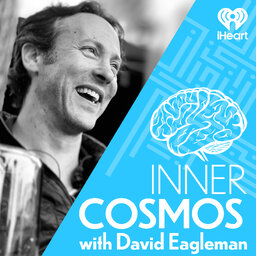Ep4 "Do people experience different realities?"
Do you see blue the same way I do on the inside? Why do some people think the northern lights make noise? Why do you think the low note on the piano is larger, and the high note brighter? Join Eagleman on a wild ride into the world of synesthesia, a topic his neuroscience laboratory has pioneered for years.
 Inner Cosmos with David Eagleman
Inner Cosmos with David Eagleman


